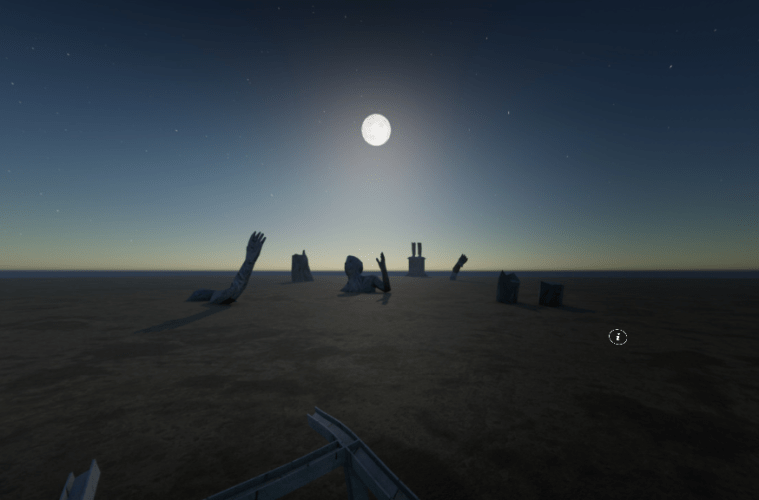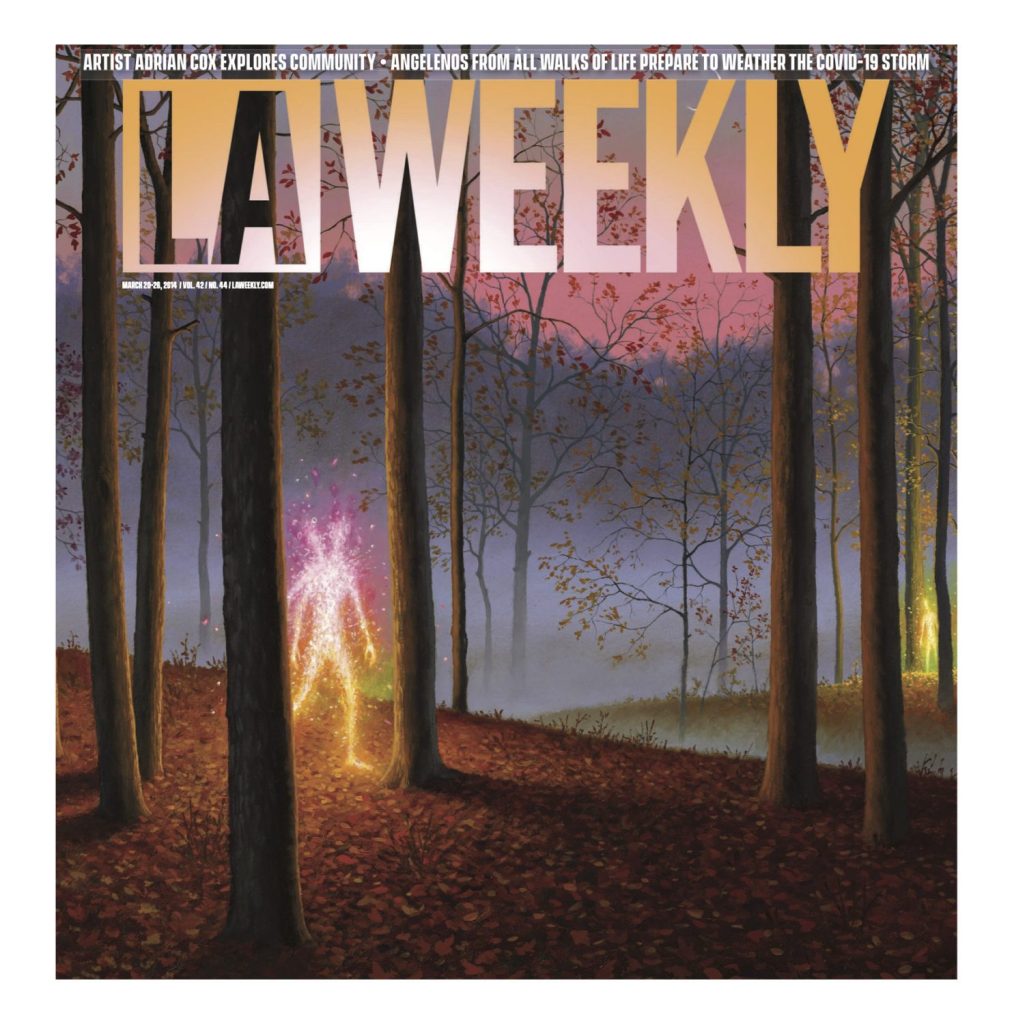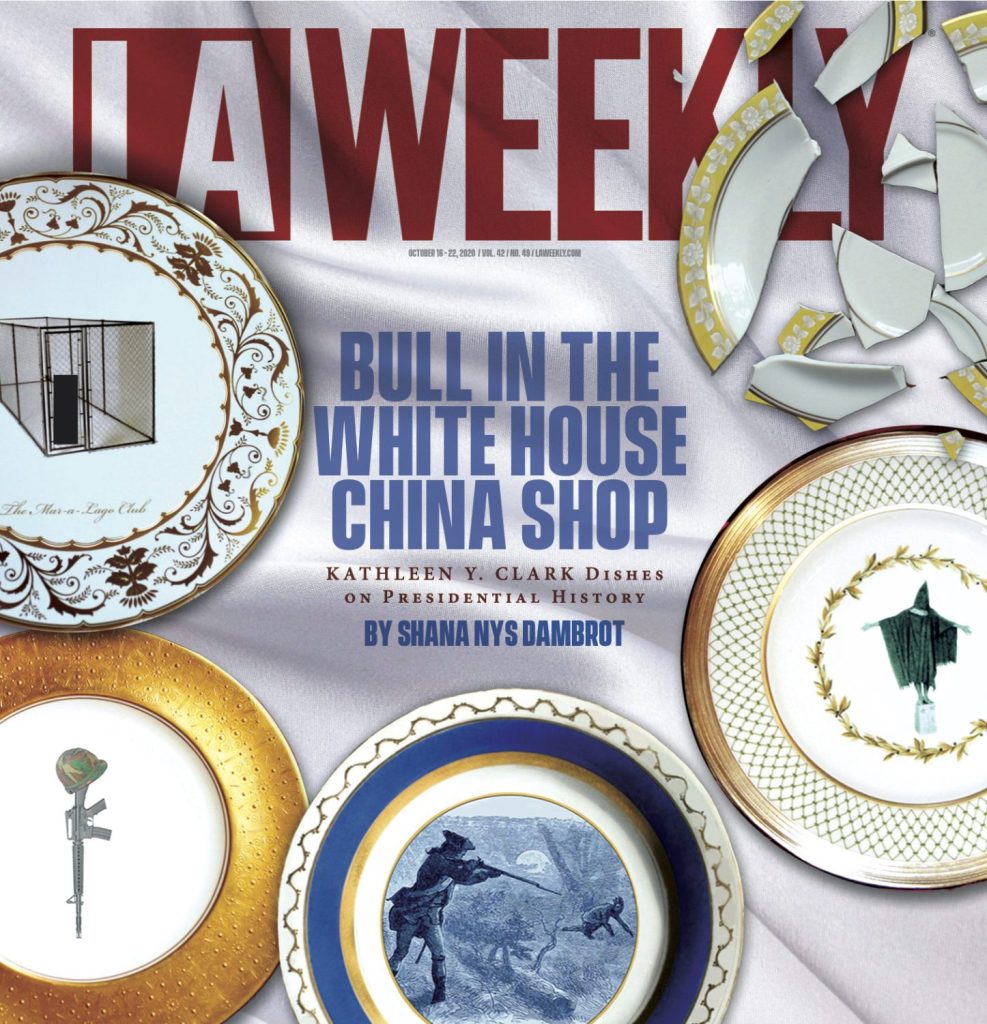Art historians have shown us how the past holds fresh insights for the present. Curators have realized a new focus on representation, inclusivity, and social engagement. Independent artists have reinvented themselves over and over in response to technology and shifting economic terrain. It has been an honor to cover and share their triumphs and perspectives, and we can’t wait to see the assuredly powerful and enduring work still to come, that will have been forged in this crucible, as we look ahead to 2021 — together, even in our separation.
The beloved and influential author Barry Lopez passed away late last week, and these are just a few of his words that have more power than ever: “We have little to guide us but love, and our ability to remember,” he wrote. “We need stories that help.” Indeed. Following are just some of the stories from the arts pages that form a sort of timeline narrative of where we’ve been and what we’ve seen.
Adrian Cox Summons the Spirit Gardener, by Trina Calderon, was our cover story on March 19, the day the first stay at home orders took effect. Although written before that curtain came down, the resonance with these haunting, poetic images of contagion and isolation was truly remarkable. “Cox’s new work vibrates around a mythical journey his characters take through power, redemption and, finally, community…”
The Berggruen Institute’s Transformations of the Human Project was an April cover story, dealing with a fellowship class of visual artists investigating the interaction of people and microbiomes — another example of a story begun in the Before Times that held new dimensions after. “Among lofty discourses on the definitional qualities of what it means to be human, much of the philosophy has centered on figuring out what separates us from the rest of the natural world…”
We covered the launch of the dublab x Onassis LA philosophical and intimate phone call interview series, The Quarantine Tapes, in April. Host Paul Holdengraber has been going strong ever since. “We have an incredible archive of guests,” they say, “that every day grows and documents the times, the feelings, the fears and our hopes.”
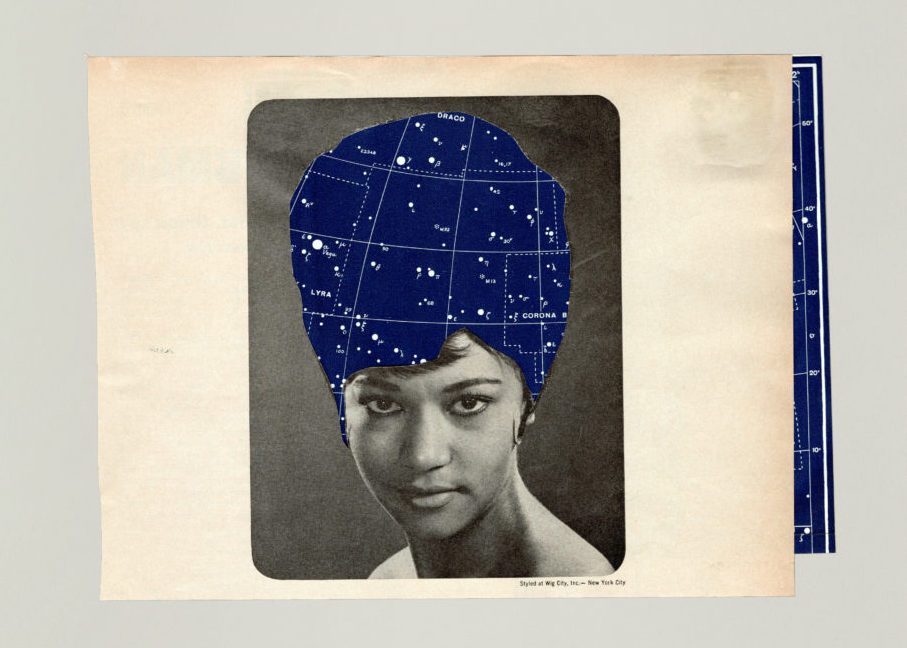
Lorna Simpson, Lyra night sky styled in NYC, 2020, Collage on paper. Courtesy the artist and Hauser & Wirth (Photo: James Wang)
Lorna Simpson Picks Up the Pieces came out in early May, in which we spoke to the artist about a new series of collage-based portraits melding historical representations of women of color with present day sensibilities. Made during lockdown, which started just weeks after her arrival in L.A., “the works were all made in the past several months, some in the past several weeks, and are very much steeped in the condition of fracture in which global society is currently immersed.”

Art by Chad Robertson
When the George Floyd and further BLM protests happened in late May and into June, it was apparent that artists and muralists were among the most influential, emotional, accessible, inspirational messengers for the movement for racial justice. It was a blessing to be able to assemble a few of these voices, in the story Art Helps Us Understand and Take Better Care of Each Other.
We interviewed the luminous curator and scholar Tyree Boyd-Pates about the dimensions of his new role at the Autry — curating the archives to flesh out Black history in the American West, while at the same time founding a new archive chronicling community experiences of Covid. And yes, Black cowboys. “I want the general public to see themselves in this history, to focus a new lens on older things, to update the things we think we know by casting fresh eyes on things of historical note…”
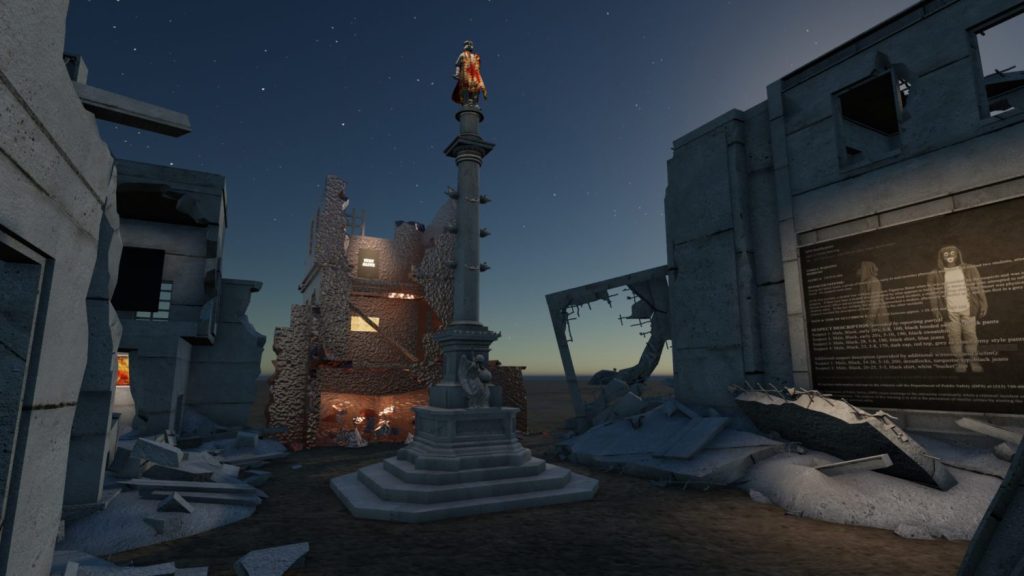
Fallen Monuments at EPOCH Gallery
In August, April Baca reviewed the exhibition Fallen Monuments at the outstandingly innovative all-VR gallery platform Epoch. In October, our cover featured photographer Kathleen Clark’s White House China book project, reimagining presidential commemorative dinnerware as archives of these men’s worst transgressions.
In November, we took a trip to El Segundo, where The Free Republic of California was founded by artist and world-builder Cole Sternberg. “FREESTATE addresses concepts of human rights, the environment, democracy and freedom through strategies of participatory multimedia culled in equal parts from art history and political activism.” No passports required, yet.
By December, it was all about responses to what has by now become a public health crisis on an order of magnitude we previously thought unimaginable. Esther Pearl Watson’s Pandemic Paintings is “a still ongoing series of nearly 200 works, each no bigger than a laptop, [in which] Watson processes the subtle and cataclysmic changes wrought by a season of public health crises, civil unrest, and political volatility. But she does this through a lens as intimate as the work’s scale, with street views of urban and suburban blocks, one frame at a time.”

Esther Pearl Watson at Vielmetter Los Angeles
British icon of the organic, ephemeral and mindful, Andy Goldsworthy, offered new works he made in bucolic isolation. “Like everyone else I am trying to work my way through the events of this year,” he writes. “The urge to create no matter what is not just a way of getting through but also fighting back. Art has the capacity and indeed the responsibility to be creative no matter what the circumstances or restrictions.” Well, amen to that.

Andy Goldsworthy, Wool Gate. Sundown. Dumfriesshire, Scotland. 24 April 2020 (Courtesy of Matthew Brown Gallery)


